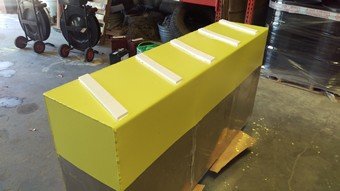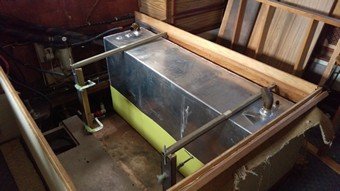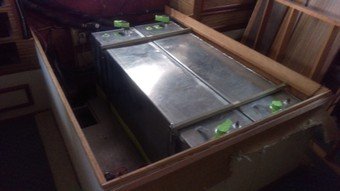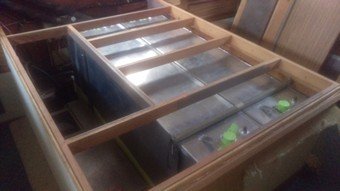I don't have receipts handy, but the A1 fuel hoses and clamps were around $500.
Tanks: the independent guy I got to fab the tanks said he'd want $1500 each, retail, and he gets the old units for scrap. 150 usg, 66 x 32 x 16, 0.125" 5042 with fittings for fill, vent, feed, return, gage. Other prices quoted in FL, east coast, and the oil field marine support types (thought they might be hungry) all came in $2250 to 2600, and all specd 0.09 material, plus freight. Another guy and I hand carried them to the boat.
So $8600 out the door, with the lucky find of the local guy. Otherwise, you'd need to add a couple of boat bucks.
The problem is it's soooo boat specific. I could see the labor going wild if I'd have had to cut them out through the deck, or worse, hull. I've heard that happens sometimes.







